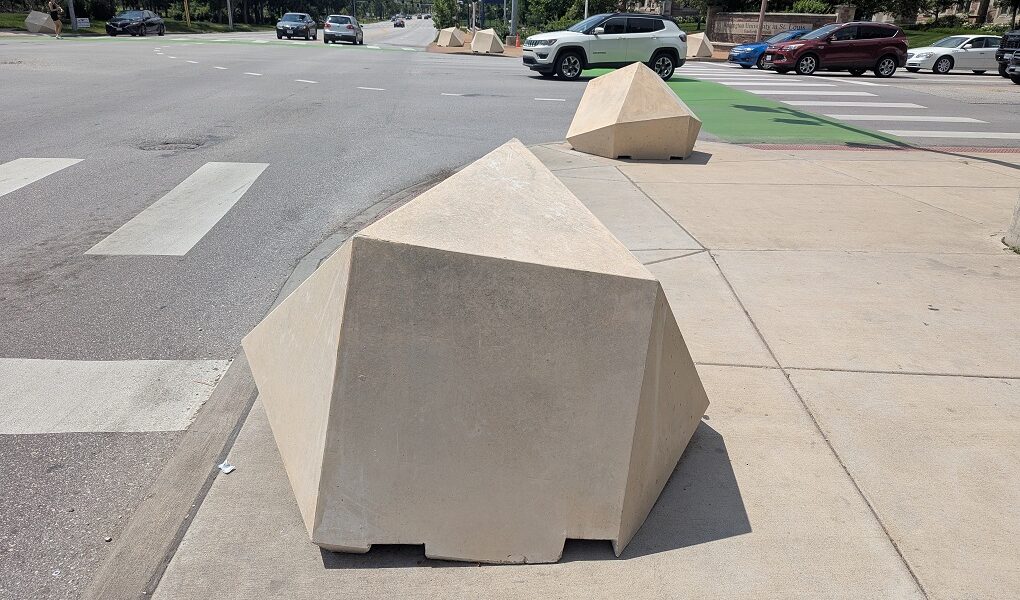Nearly three years ago, I called for bollards at Sinker and Forest Park Parkway. Too regularly drivers could not keep their vehicles between the curbs and the car debris and carcasses left behind screamed for action to protect the many people crossing the intersection to access the Metrolink station, Forest Park, the Delmar Loop, Washington University in St. Louis, and the residential neighborhoods nearby.
NextSTL – Bollards at Skinker and Forest Park Parkway Needed
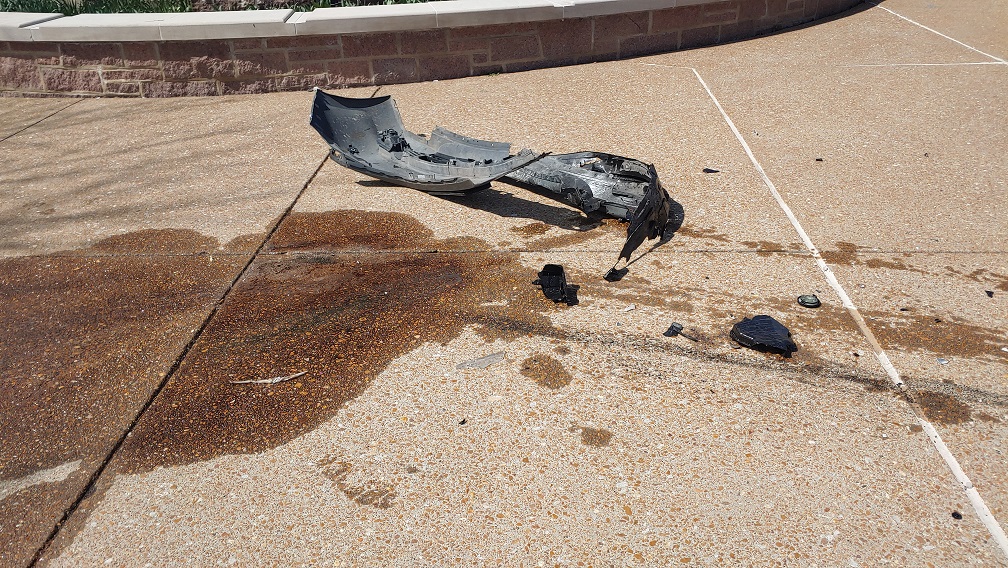
I was excited to find out soon thereafter that WashU was working with a design firm to plan and implement safety improvements there. Too often maximizing the speed and volume of traffic, known as the Level of Service, is given higher priority over safety in street design. This was a welcome departure from that flawed methodology.

The plan called for wider crosswalks, audible crossing signals, painted bike lanes, medians to help drivers turn more safely, and bollards to protect people on the corners from drivers. The speed limit on FPP is 40 mph. At that speed a driver striking a person is 90% likely to cause a fatality. On top of that there is little inside or outside of vehicles to deter or restrain drivers from going faster.
NextSTL – Safety Improvements coming to Skinker and Forest Park Parkway
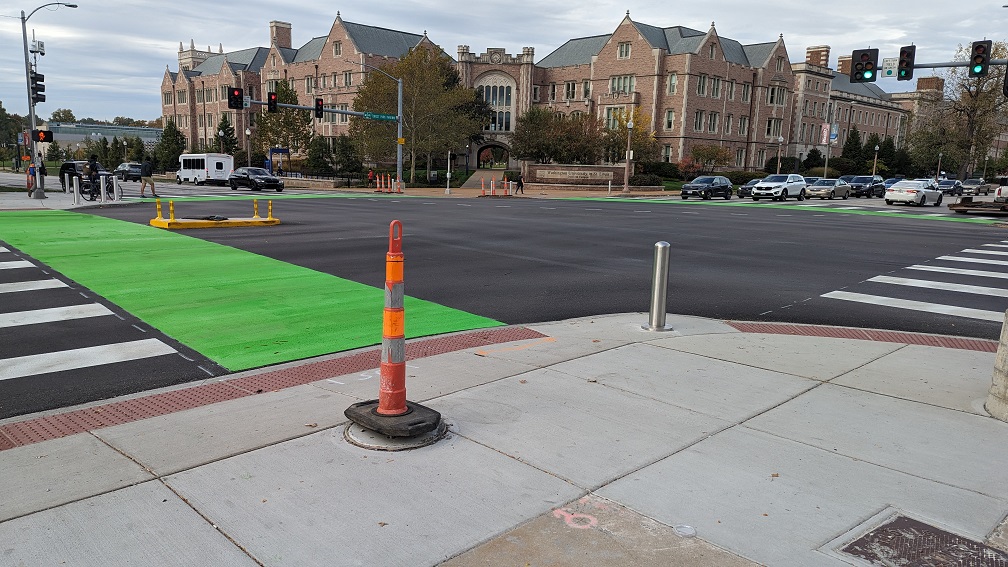
The plan was implemented in the fall or 2023. The changes made a noticeable improvement in driver behavior. One quibble is that to cross FPP, you don’t have to press the beg buttons, but to cross Skinker you do. More concerning is that the bollards had gaps that a car could fit through.

It gets worse-the bollards were knocked over within a few months. It turns out they weren’t really bollards; they were just posts. While they gave a visual cue to drivers to slow down and stay in the street, they created a false sense of safety for people at the corners. Quite negligent in my opinion.
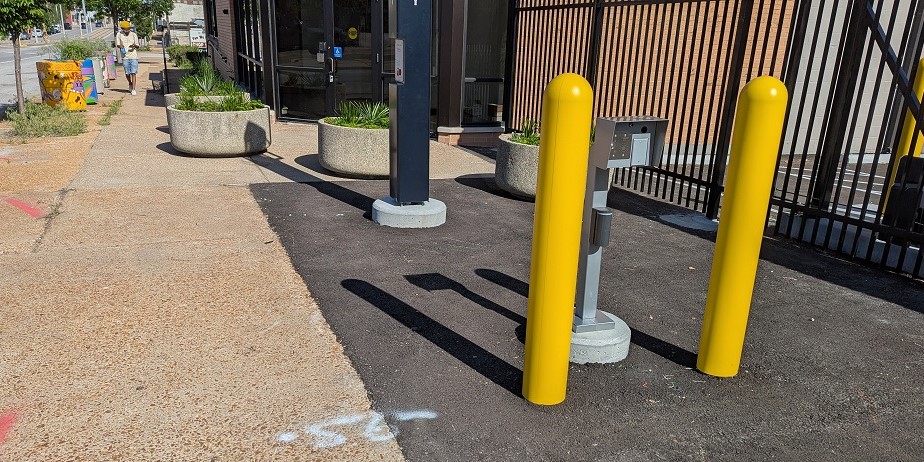
We needed real bollards or heavy planters like WashU installed at 5980 Delmar.

When WashU wants to prevent people from stealing parking, they put in real bollards. This is what’s needed at so many intersections.

November 2024
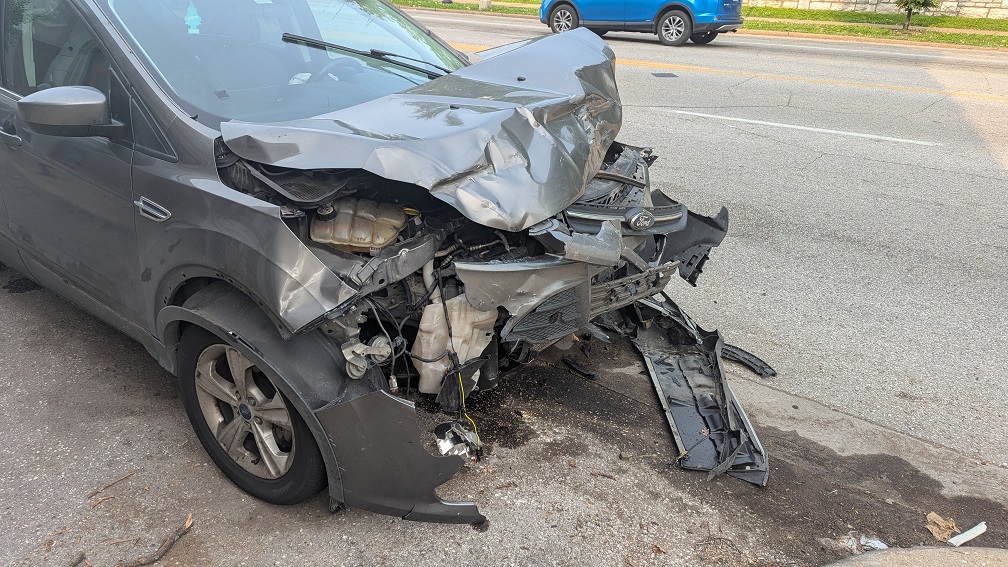
May 2025
The carnage continued unabated.
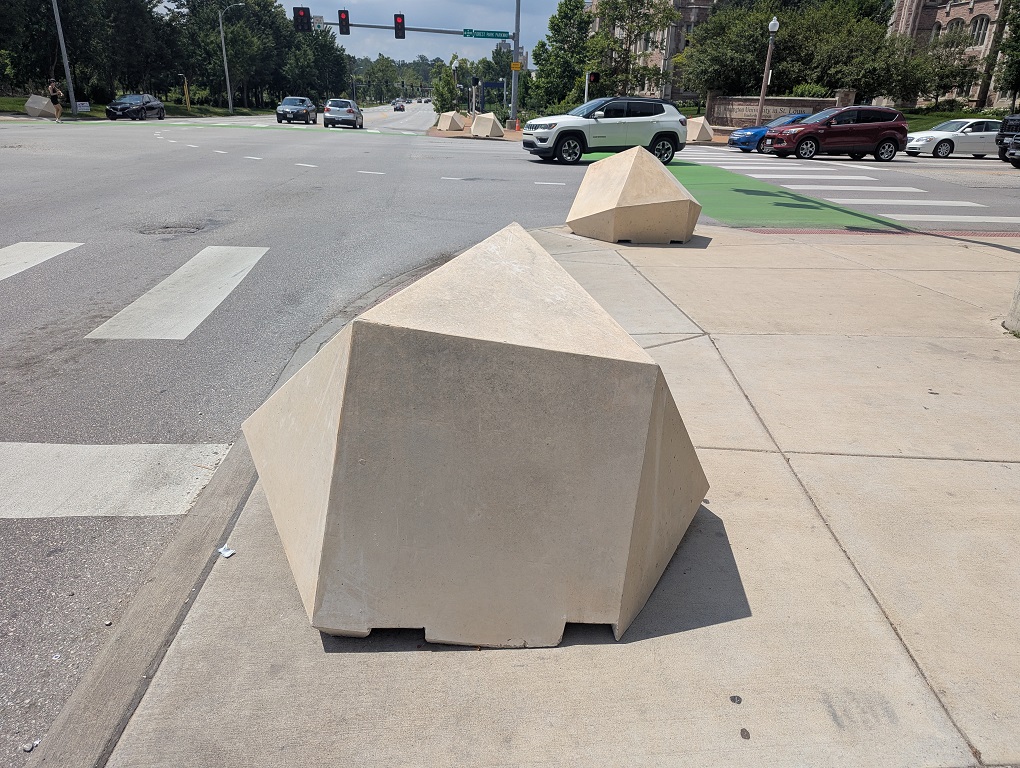
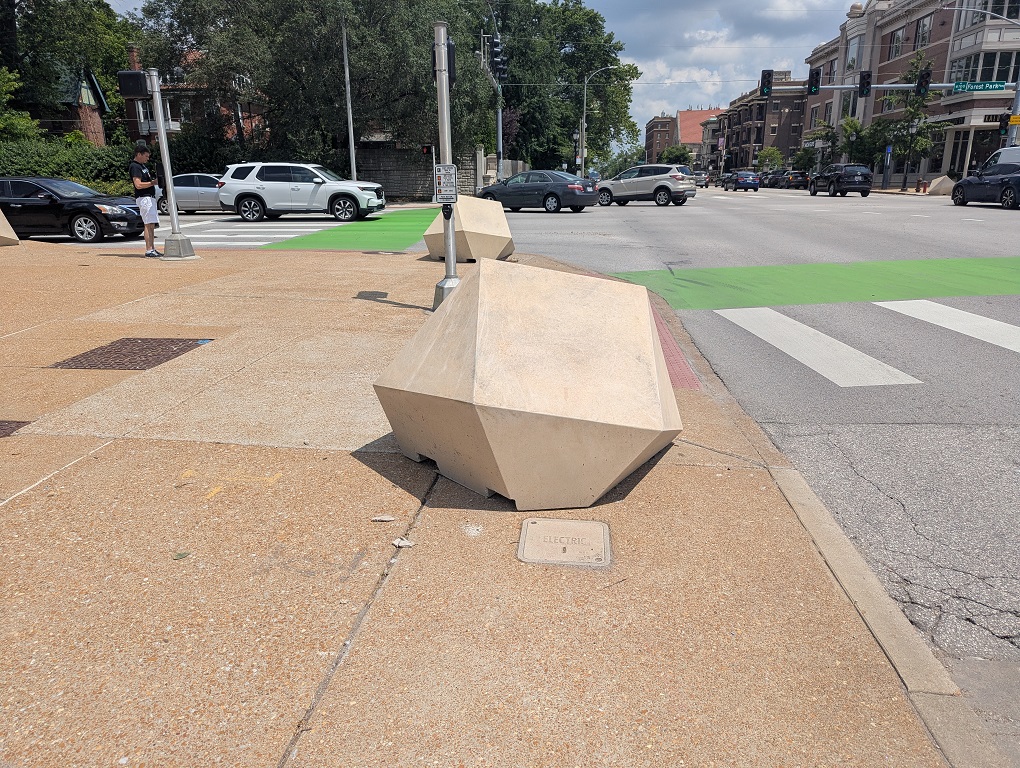

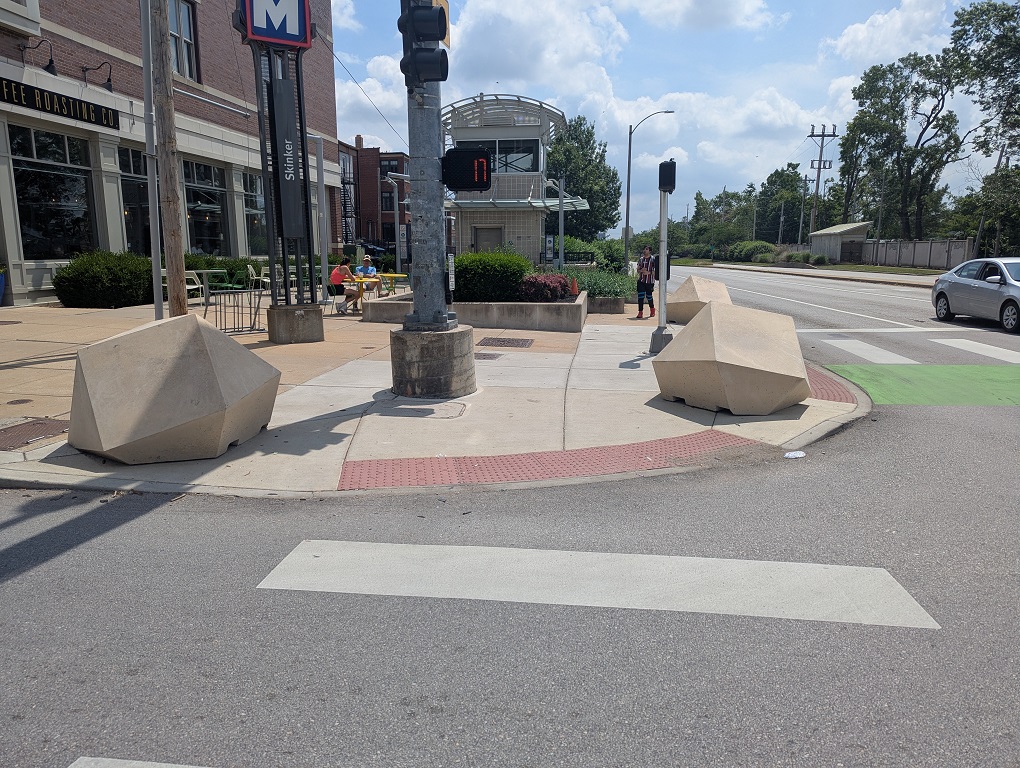
The reason given for not installing actual bollards was that the underground Metrolink station and utilities made them too difficult. The next option is something big and heavy set on the sidewalk. Last week some Big Heavy Objects ™ were placed at the four corners of the intersection. A welcome surprise, three years in the making. Still though there are gaps a vehicle can fit through. Someone can drive right up under the building at the corner and wreak havoc on the WashU campus.
TrailNet’s 2024 crash report found that it was the deadliest year for pedestrians in both St. Louis City and County. Part of the city’s $40M allocated for Principal Arterial Traffic Safety Enhancements includes safety improvements to 10 of the most dangerous intersections. These can’t come soon enough.
